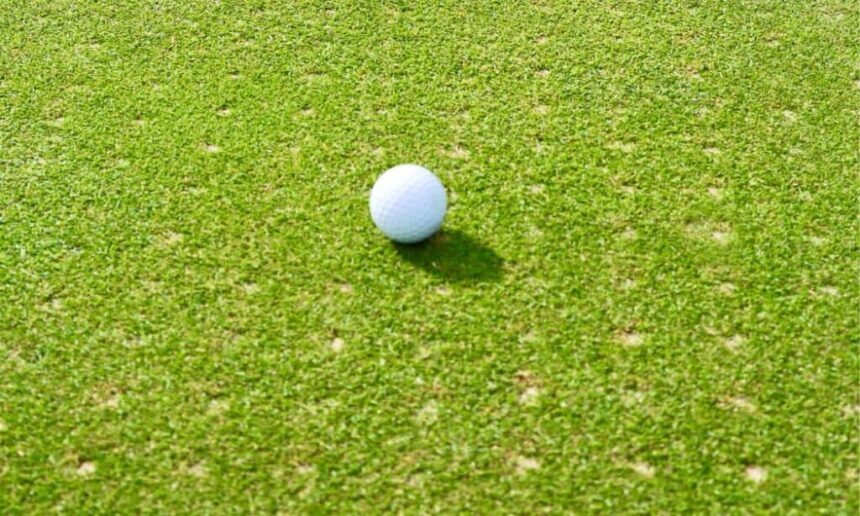How Long Do Aerated Greens Take to Heal?
There’s hardly anything more annoying than arriving at the golf course and finding out that the greens have been recently aerated.
This significantly impacts the game and many golfers, upon seeing holes punched into the green, simply turn around and head back home without playing a round.
Of course, there’s nothing better than playing golf on a perfectly maintained course and putting on the velvety and consistent green.
However, creating a smooth playing surface is not possible without certain maintenance processes that occasionally can disrupt the game.
These short-term disruptions, such as the aeration of the greens, benefit the long-term health of the golf course and contribute to the overall enjoyment of the game.
Still, as many golfers take time out of their busy schedules to play golf, it’s always good to know how long do aerated green take to heal and when the course can be back to normal.
Table of Contents
How Long Do Aerated Greens Take to Heal?
The recovery time of aerated greens will depend on several factors.
The type of aerating process, weather conditions, ground and soil quality, available materials and machinery, and, ultimately, the skill and experience of groundskeepers all play a role in how long the green will take to heal.
After the least invasive, small-tine, aerating, the green may be ready for play immediately afterward, although to limited effectiveness.
However, in general, the timeline for green recovery after aerating is 2 to 6 weeks.
Ideally, in perfect weather conditions, meaning warm days and cool and moist nights, the green can heal in two weeks.
Even if the weather is less than perfect, manually watering the greens for adequate moisture can significantly speed up the process.
The timing is also important. Optimal recovery time is only achieved if aerating is done when the grass is healthy and actively growing.
Why do Courses Aerate the Greens?

Greens on the golf courses experience a lot of foot traffic throughout the year.
As a result, over time, the soil under the green gets compacted, negatively impacting the grass health and growth.
By aerating, or putting small holes in the green, the air and water are allowed to reach the soil beneath the green easier.
This reverses the compaction process and creates space for new grassroots to grow. Besides promoting healthy grass growth, aeration also prevents thatch buildup.
Thatch is often a huge problem at golf courses, as the old plant material accumulates at the soil surface and acts as a sponge, holding water and preventing airflow.
Excessive thatch creates unfavorable playing conditions, increases the risk of grass diseases, and is responsible for inconsistent green speeds.
Regular aerating also helps with irrigation, allowing easier access of water to the soil.
Do Fairways Get Aerated Too?
At many courses, fairways also go through aerating treatment. This particularly happens to the parts of fairways that are more prone to soil compacting.
These are the high-traffic areas, where there’s a lot of walking, cart driving, or mowing. However, the aerating process is slightly different than on the greens.
Fairways cover a much larger area than greens, so using hand-operated tools would be rather inefficient and time-consuming.
Therefore, fairways are mostly aerated using ride-on machinery.
How Often do Golf Courses Aerate the Greens?

The frequency with which the golf course will aerate the greens depends on the type of green, the grass growing season, and the climate zone the course is in.
All decent golf courses will aerate at least once a year, but most do it 2 or 3 times, commonly in the late spring and early fall.
As I said already, aerating is best done when the grass is growing the most aggressively.
This decreases the risk of permanent damage to the green and allows for the quickest recovery time.
The aeration is never done during the hot summer days as the grass is already in relatively poor health and aeration can only stress and damage it further.
This is also the busiest time of the year for golf clubs and most of them try to go through the aeration process during the slower season of the year.
The Green Aeration Process
The process of aerating greens commonly includes four stages: coring, collection, sanding, and healing.
Properly performing each of these steps plays a big role in the quicker recovery time of the green.
Coring implies removing plugs from the ground, usually using specialized machinery.
The plugs commonly contain the whole grassroots and are 1/2 to 2 inches deep. These plugs are then collected and often mulched and spread elsewhere on the course.
The empty holes that are left after the coring are then filled with fine sand which makes the green playable while still allowing a free flow of water and air beneath the green surface.
When all this is done, the grass is left to heal naturally.
Can You Play on Aerated Greens?
While the freshly aerated green will certainly have a negative impact on both the putting one and speed, you can still play on them, even right after the aeration.
However, as the green won’t be at a peak condition, you’ll have to adjust your game a bit.
The trajectory of the putt could be rather unpredictable as having the ball land on the side of a removed core can make it travel in a different direction than expected.
That’s why it’s important to keep the ball low and hit it slightly harder with true contact between the putter’s face and the ball.
This will increase the chances of the ball simply rolling over the hole, making the path more predictable and making up for the speed lost on each bump.
Conclusion
Even though it can be very frustrating, most golfers are aware of the importance of aerating the greens.
While it may take 2 to 6 weeks for the green to return to optimal playing condition, earthing ensures that the surface will be smooth and consistent throughout the years.
Nowadays, most golf clubs inform their players of the scheduled creation, so they can play their golf outings according.
In addition, with some practice, you can learn to putt the ball decently even on the freshly aerated green, and enjoy the game nevertheless.
Plus, you use these times to play just for fun and not post the scores, at least while the green is in its worst condition.




